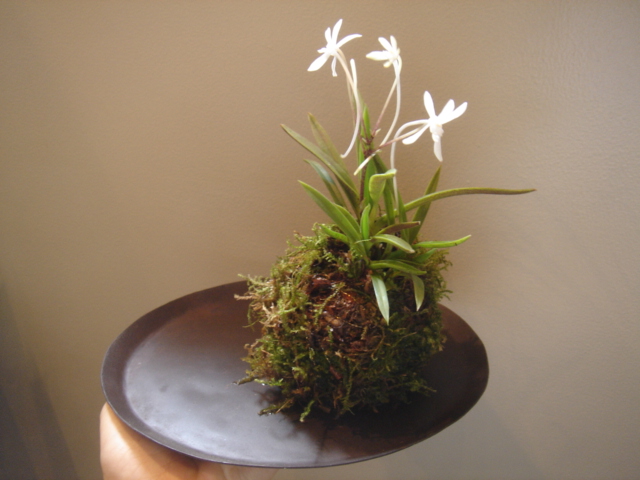Quote:
Originally Posted by bumbletowne

Neofinetia falcata are traditionally mounted in hollow sphagnum balls. The art of putting them in these sphagnum balls is called kokedama.
|
Shoreguy is mostly right, Kokedama, 苔玉, usually have soil in the middle. Kokedama were originally developed to either showcase the live moss or to showcase terrestrial plants.
The potted mounds of sphagnum moss that Neos are usually planted in are perhaps more properly called Kokedai, 苔台, although Japanese growers rarely even use that term, referring to the mound as simply Koke (moss), or Mizugoke (sphagnum). I prefer the term moss mound.
This mistake of using the term Kokedama was started by western neo growers here on the orchid board who noticed a visual similarity between Kokedama and the moss mounds that neos are grown in and just started using the term incorrectly.
The moss mounds that neos are grown in wouldn't be called kokedama in Japanese because the "-dama" 玉, in Kokedama almost always implies a geometric sphere (i.e. the base is round as well as the top). Kokedama are also usually (though not always) made with live moss and usually grown on a plate or suspended without a pot. Any plate or bowl used with a kokedama usually functions simply as a saucer or coaster and rarely will have a hole for drainage.
That said, it is not impossible, or really even all that uncommon to grow a neo or other epiphytic orchids in a true kokedama as long as the center is either hollow, filled with loosely packed sphagnum, or filled with a styrofoam ball rather than soil:
A Phal:

and a Neo:


































 Linear Mode
Linear Mode


